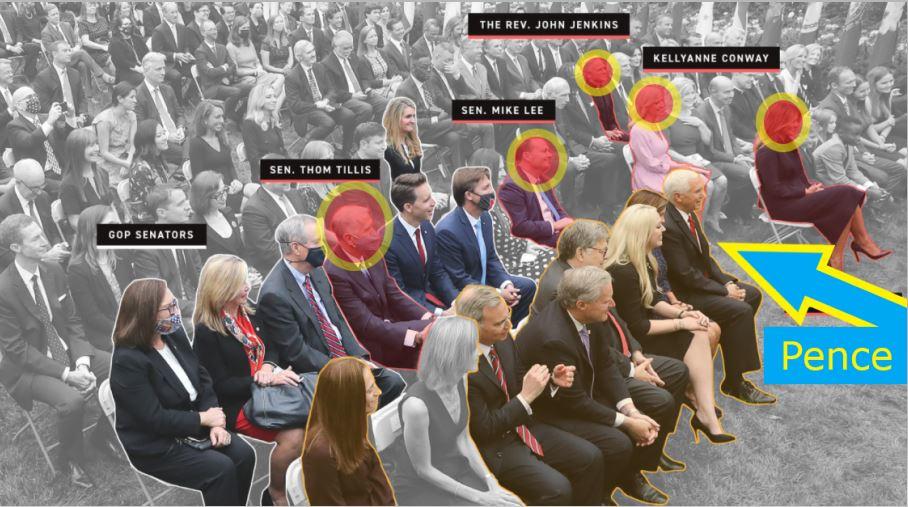The momentum carrying the United States marijuana legalization movement appeared to dissipate last week after Ohio voters rejected a proposal to end prohibition of the plant. Issue 3, which would have legalized both recreational and medical marijuana in the state, was defeated by a 2 to 1 margin. Now, however, suspicions are swirling that election fraud — not the electorate — defeated the measure.
Two sets of screenshots from news coverage tracking last week’s vote revealed inconsistencies in the tally. Within minutes, hundreds of thousands of “yes” votes flipped to “no” votes, even though the number of precincts reporting only increased by 6%.
The first screenshot shows 39% of precincts reporting 969,662 (65%) “yes” votes but only 512, 698 (35%) “no” votes. Eleven minutes later, with 45% of precincts reporting, there were 1,155,345 “no” votes and a mere 614,866 “yes” votes. Coincidentally, the respective percentages remained 65% and 35%, but reversed to reject Issue 3 rather than pass it.
Another set of screenshots reportedly taken by a professor at Oberlin College slightly later in the evening showed Issue 3 passing with 713,396 (84%) votes in favor and only 133,221 (16%) votes against, with 58% of precincts reporting. Seven minutes later, with 67% of precincts reporting, the measure seemed inevitably defeated, with 1,469,042 votes (65%)against the bill and only 790,250 in favor (35%). Again, the 65-35 ratio appeared. (Note: the figures from this set of screenshots were submitted to Bob Fitrakis, who runs the Columbus Free Press, wrote the original report on potential fraud on Issue 3, and has co-authored a book about voter fraud in Ohio. The figure totals in this set of screenshots also appear lower than the set above — in spite of a higher percentage of precincts reporting. Anti-Media has reached out to Mr. Fitrakis for his insight into this discrepancy and will update this story should he respond.)
While the rapid and unexplained flips in the vote are sufficient to warrant skepticism toward the official results, additional factors raise doubts.
First, polls in the state leading up to the election predicted either a tie or passage of the bill. The poll that came closest to the official results was conducted by the University of Akron from September 1 to October 1 and found decided voters were evenly split 46% to 46%. No polls predicted the measure would fail — though some excluded rural areas, which tend to vote more conservatively.
Nevertheless, Secretary of State Jon Husted, a rightwing politician, publicly and vehemently opposed Issue 3.
“The idea that [cannabis] would be legalized and available in every neighborhood and community in this state is a scary thought when it comes to how we’re going to build a stronger economy and how employers are going to fill their needs and meet their customers’ needs,” he said in a speech on October 29. Free Columbus Press noted Husted also threatened proponents with legal action.
Husted’s office provided the official numbers on the vote — meaning the gargantuan flip that led to the rejection of legalization came straight from the Secretary of State, who publicly and aggressively opposed the measure.
Further still, reports of glitchy electronic ballots emerged in Hamilton County, which includes Cincinnati, on election day. As the Free Columbus Press observed, “Such breakdowns are common occurrences in Ohio, which give the state’s operatives time and cover to manipulate the reported vote count. So extensive was the meltdown of the iPad tablets used as poll books in Hamilton County, Ohio (home of Cincinnati) that the state judge ordered the polls open an hour and a half longer. Voters were told to come back later.”
Indeed, Ohio has made consistent headlines over the years over the questionable integrity of its voting process. Implicated in past allegations of fraud are George W. Bush and Diebold, the electronic voting company whose CEO said in 2003, “I am committed to helping Ohio deliver its electoral votes to the president next year.” These issues continued long after the 2004 election, leading Fitrakas to file a 2012 lawsuit against Husted and a Nebraska-based voting company that supplies electronic voting systems to Ohio. The suit alleged “the software could erroneously alter election results or even lead to election fraud.” Fitrakas sought to block electronic voting machines — an effort that ultimately failed.
Even so, Husted launched an investigation into potential fraud that concluded in 2015. That investigation conveniently determined only 145 non-citizens had voted illegally — but found no issues with the electronic machines. Rather, just before the election, Husted accused Responsible Ohio of voter registration fraud, further confounding the controversial election results.
To be sure, voters did harbor substantial apprehension toward Issue 3 over concerns it would initiate a state-sponsored monopoly over the hypothetical burgeoning marijuana market. The legislation would have granted licenses to a mere ten growers, thereby securing power for those who sponsored the legislation through Responsible Ohio (Husted ensured “monopoly” was included in a description of Issue 3 on the ballot).
Even in consideration of these legitimate concerns, it is still inexplicable why thousands of votes could have flipped so easily, so quickly, and with such a small increase in the number of precincts reporting (Issue 1 saw a similar flip, as the screen shots demonstrate). Many compelling explanations have been offered as to why Issue 3 failed, but considering Ohio’s history of voter fraud and the open disdain Husted expressed for the measure, it is a matter that — at the very least — warrants further, independent investigation.
The Emergency Election Sale is now live! Get 30% to 60% off our most popular products today!



